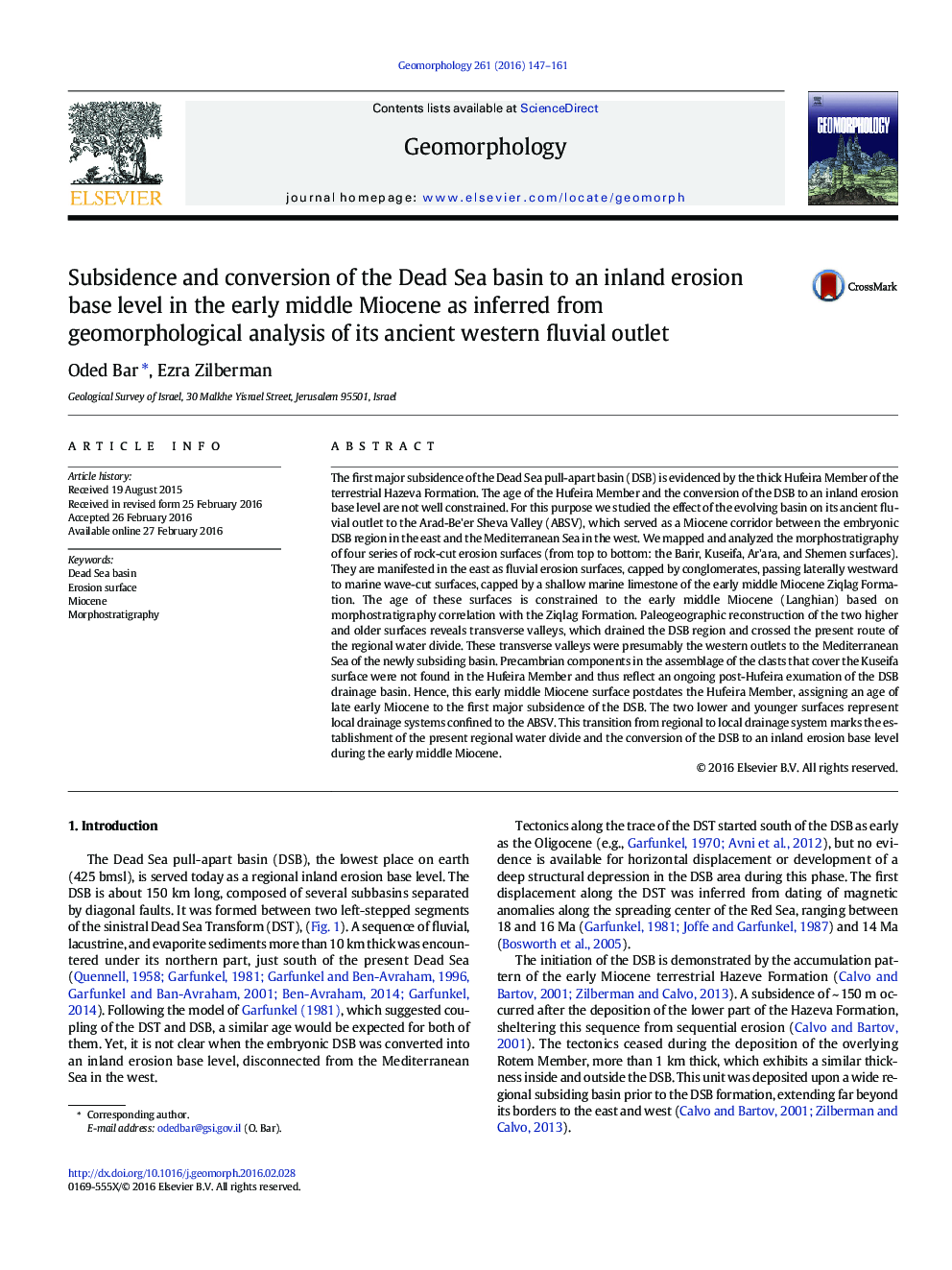| کد مقاله | کد نشریه | سال انتشار | مقاله انگلیسی | نسخه تمام متن |
|---|---|---|---|---|
| 4684053 | 1635388 | 2016 | 15 صفحه PDF | دانلود رایگان |
The first major subsidence of the Dead Sea pull-apart basin (DSB) is evidenced by the thick Hufeira Member of the terrestrial Hazeva Formation. The age of the Hufeira Member and the conversion of the DSB to an inland erosion base level are not well constrained. For this purpose we studied the effect of the evolving basin on its ancient fluvial outlet to the Arad-Be'er Sheva Valley (ABSV), which served as a Miocene corridor between the embryonic DSB region in the east and the Mediterranean Sea in the west. We mapped and analyzed the morphostratigraphy of four series of rock-cut erosion surfaces (from top to bottom: the Barir, Kuseifa, Ar'ara, and Shemen surfaces). They are manifested in the east as fluvial erosion surfaces, capped by conglomerates, passing laterally westward to marine wave-cut surfaces, capped by a shallow marine limestone of the early middle Miocene Ziqlag Formation. The age of these surfaces is constrained to the early middle Miocene (Langhian) based on morphostratigraphy correlation with the Ziqlag Formation. Paleogeographic reconstruction of the two higher and older surfaces reveals transverse valleys, which drained the DSB region and crossed the present route of the regional water divide. These transverse valleys were presumably the western outlets to the Mediterranean Sea of the newly subsiding basin. Precambrian components in the assemblage of the clasts that cover the Kuseifa surface were not found in the Hufeira Member and thus reflect an ongoing post-Hufeira exumation of the DSB drainage basin. Hence, this early middle Miocene surface postdates the Hufeira Member, assigning an age of late early Miocene to the first major subsidence of the DSB. The two lower and younger surfaces represent local drainage systems confined to the ABSV. This transition from regional to local drainage system marks the establishment of the present regional water divide and the conversion of the DSB to an inland erosion base level during the early middle Miocene.
Journal: Geomorphology - Volume 261, 15 May 2016, Pages 147–161
